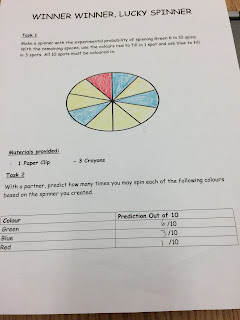Shapes and symmetry and location oh my!
Hello Everyone,
Welcome back to my amazing world of math blog. Today we will be discussing shapes and lines of symmetry. To begin we will be looking at the Van Hiele learning steps. This is where we will be learning how our students are developing through the stages of geometry. Stage 0 is visualization. This is where the student can classify a shape (usually starting in kindergarten and developing as more and more shapes are added). Between primary and junior grade we see students move from stages 0 into 1 and then into 2. Stage 1 is the analysis stage in which they analyze different shapes and learn the properties of those shapes. Stage 2 comes informal deduction which is where we see relationships among the properties. This can be seen through connection/interconnections, differences, and similarities). Stages 3 and 4 develop through the intermediate and beyond years. Stage 3 is deduction in which students see deductive systems of properties. Stage 4 is rigor in which there is an analysis of deductive systems. After figure out where the students are in these stages we can then gage on where we can begin our lessons in geometry.
 |
| Drake, P. July 27, 2015. "Van Hiele Stages." Retrieved from |
 |
| Bauman, A. Nov. 3rd 2017. "Possible Triangle Combinations." Retrieved from my own personal library |
This week we looked at 3 different math activities. One dealing with triangle classification, another dealing with reflection and the last with symmetry. The activity picture to the left is the group I was in. We were to come up with possible triangle combinations. The goal was to figure out with we could use either an equate, isosceles, or scalene triangle to make a triangle that had an acute, obtuse and a right angle. If we could we would try to draw the triangle, if not we put an X. We were also give toothpicks to use an manipulatives in case we needed a visual. This activity was meant more for grade 5 as they were learning classification of triangles and how to incorporate angles into these. We could have also used a protractor to find the angle to see if it could work. The second activity w were shown was about reflection which was used with a visualization on a grid. The activity was navigating a geo city. The goal was to use a chart to plot different coordinates. The you can test to see if you could make a reflection by moving the different buildings along the x & y axis. The last activity was about lines of symmetry. This was played out in 3 different stages. First you were given a work sheet and told to draw a line of symmetry through it. Next you would use tiles to make any shape and fine the line of symmetry. Lastly you would make a 3D shape out of megablocks and then try to find a line of symmetry. This activity was meant of grade 4 and showed how we could find line of symmetry in a 2D and 3D shape.
 |
| Doucette, K. Nov. 3rd 2017. "Lines of Symmetry." Retrieved from my own personal library |
Lastly our lesson we went over in class was talking more in depth about lines of symmetry. In our textbooks we learned about two types of lines of symmetry. One was on page 408 that included reflective lines of symmetry in which you can see that one half of the shape is reflective of the other half of the shape.The other was on page 410/411 that included rotational symmetry in which the centre point fits over a tracing of itself at least once before it has completed a full rotation. An example of this was shown to the right with our hexagon. It has 5 lines of rotational symmetry because it can be rotated and be reflective of itself 5 times before starting back at the beginning. Something like an isoceles triangle does not have reflective symmetry because it can't fit over an image of itself until it has completed a full turn. But the isoceles triangle does have rreflective symmetry because when folded in half it does reflect onto itself.
Well that's all for now, please come back next week as we explore the topic of measurement


Comments
Post a Comment